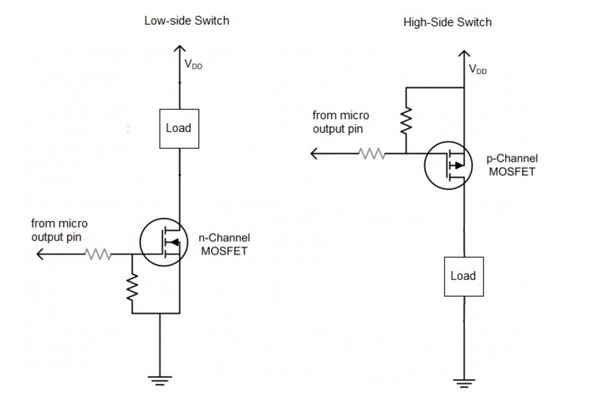Okay, today I want to share something about n-channel MOSFETs versus p-channel MOSFETs. You know, I’ve been tinkering with electronics for a while now, and one thing that always gets me is how these little guys work. So, I set out to get to the bottom of it, hands-on, no fancy jargon.

First off, I grabbed a bunch of components from my stash – some n-channel MOSFETs, some p-channel MOSFETs, a breadboard, a power supply, and a few resistors and LEDs. I just wanted to see these things in action, you know? I was itching to try
Getting Started
I started with the basics. I hooked up an n-channel MOSFET to the breadboard. My goal was simple: use it as a switch. I connected the source to the ground and the load (an LED with a resistor) between the drain and the positive side of the power supply. Then, I applied a voltage to the gate. Boom, the LED lit up! It felt like magic, even though I knew it wasn’t. It was just the MOSFET doing its job, turning on when there’s a positive voltage at the gate.
Switching to P-channel
Next, I swapped the n-channel for a p-channel MOSFET. This was a bit different. For the p-channel to turn on, I had to pull the gate voltage low, towards the ground. I reversed the setup, connecting the source to the positive supply and the load between the drain and the ground. Applying a negative voltage (or grounding the gate) turned the LED on. It’s like the opposite of the n-channel, which is pretty cool when you think about it.
Playing Around with Logic
Then it hit me: what if I used these MOSFETs to pass logic signals? I read somewhere that you can use p-channel to pass a logic 1 and n-channel to pass a logic 0. So, I set up a little circuit to test this out. I used the n-channel to pull an output to the ground (logic 0) and a p-channel to pull it up to the positive supply (logic 1). It worked like a charm! It was fascinating to see how these components could be used to manipulate digital signals.
Realizations Along the Way
- They’re Everywhere: I started noticing MOSFETs in everything – from the instrumentation systems to the PIC microcontrollers I play around with. They’re like the unsung heroes of the digital world.
- Different Modes: I also dug a bit into enhancement mode MOSFETs. The low-power ones are similar in construction. It’s neat how they only operate in the first quadrant.
- Voltage Bias: For linear amplifiers, I experimented with voltage divider bias. It’s a simple way to set the operating point of the MOSFET.
This whole experiment wasn’t just about turning LEDs on and off. It was about understanding the nuts and bolts of how these components work and how they can be used in real-world applications. I mean, I even touched on I2C communication, which uses open-drain configurations with input buffers. It’s all connected, and it’s all pretty amazing.
So, yeah, that’s my little adventure with n-channel and p-channel MOSFETs. It’s not just about the theory; it’s about getting your hands dirty and seeing the magic happen. Hope you found this little journey as interesting as I did. And remember, the best way to learn is by doing. Keep tinkering!

